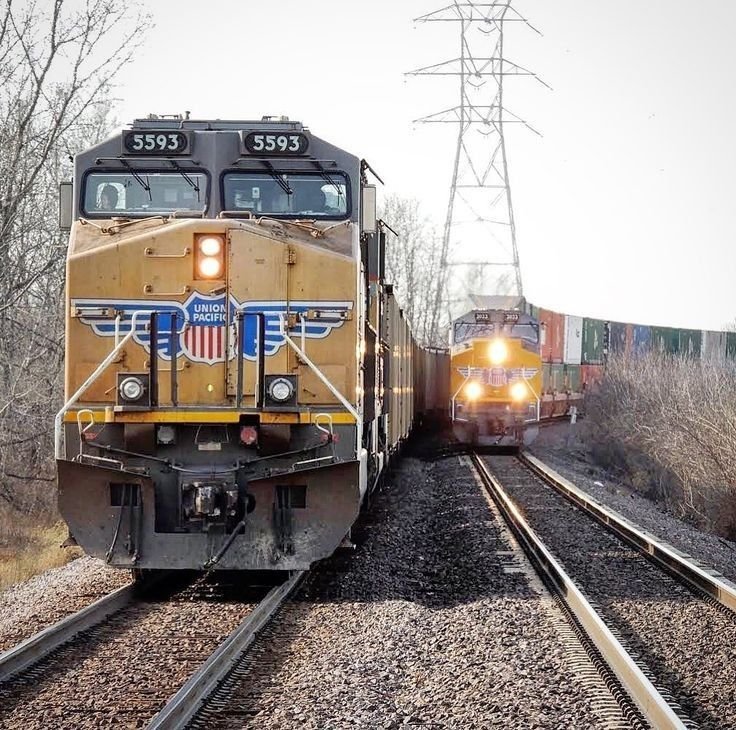When hurricanes approach land, a flurry of preparations ensues, including evacuation plans for residents and strategic movement of critical infrastructure. A recurring question arises: did trains leave the hurricane path earlu enough to ensure safety and minimize damages? The role of trains in hurricane preparedness is often overlooked, yet their operation and timely relocation are crucial in mitigating risks. This article delves into the dynamics of train evacuations during hurricanes, exploring logistics, challenges, and the lessons learned from past events.
Table of Contents
Understanding Train Relocation During Hurricanes
Did trains leave the hurricane path earlu in past instances of severe weather? The answer depends on multiple factors, including early warnings, operational readiness, and communication among agencies. Train systems must prioritize the safety of passengers, crew, and cargo while ensuring minimal disruption to services.
Historically, railroads have been integral to evacuating people and transporting emergency supplies. However, moving trains out of the hurricane’s path involves intricate planning, including determining safe destinations, assessing track conditions, and managing rail traffic efficiently.
The Importance of Early Warnings
Early detection and forecasting of hurricanes play a pivotal role in ensuring that did trains leave the hurricane path earlu becomes a reality. Meteorological advancements have significantly improved hurricane prediction, enabling transportation agencies to prepare well in advance. Still, the accuracy of early warnings and the timeliness of actions determine the effectiveness of train evacuations.
For instance, during Hurricane Katrina, delayed actions raised concerns about whether train systems acted swiftly enough. Comparatively, in more recent hurricanes, enhanced early warning systems have allowed for better preparedness, ensuring trains are relocated to safer regions before the storm hits.
Challenges in Train Evacuations

Did trains leave the hurricane path earlu when faced with logistical challenges? The complexity of train systems often makes evacuation a daunting task. Key challenges include:
- Track Vulnerability: Tracks near coastal areas are susceptible to flooding and damage from storm surges, requiring preemptive measures to safeguard rail infrastructure.
- Coordination Among Agencies: Effective communication between rail operators, emergency management agencies, and meteorologists is critical. Miscommunication can lead to delays or errors in decision-making.
- Passenger and Cargo Safety: Ensuring the safety of both passengers and high-value cargo necessitates meticulous planning and contingency measures.
Despite these challenges, successful evacuations hinge on strategic decision-making and real-time adaptability.
Notable Instances of Train Evacuations
Examining historical events provides insights into whether did trains leave the hurricane path earlu and the outcomes of those decisions. Notable examples include:
- Hurricane Harvey (2017): Rail operators in Texas relocated trains carrying hazardous materials well ahead of the storm’s arrival, preventing potential environmental disasters.
- Hurricane Sandy (2012): Although New York and New Jersey faced significant rail disruptions, many train systems managed to move critical assets to safer locations, mitigating extensive losses.
- Hurricane Andrew (1992): Early relocation efforts were limited due to less advanced forecasting technology, leading to substantial damage to rail infrastructure.
These cases highlight the importance of timely actions and underscore the ongoing need for improvement.
Technological Advancements in Train Relocation
In today’s era, technology plays a vital role in ensuring that did trains leave the hurricane path earlu becomes a standard protocol. Innovations include:
- Real-Time Monitoring: GPS and satellite tracking systems enable rail operators to monitor train locations and weather conditions simultaneously, allowing for prompt responses.
- Predictive Analytics: Advanced algorithms analyze weather patterns and predict potential risks, guiding evacuation decisions.
- Automated Systems: Automation streamlines rail operations, reducing human error and expediting train movements during emergencies.
These advancements have revolutionized hurricane preparedness, making train evacuations more efficient and reliable.
The Role of Policies and Regulations
Government policies and regulations significantly influence whether did trains leave the hurricane path earlu during emergencies. Agencies like the Federal Railroad Administration (FRA) and the Federal Emergency Management Agency (FEMA) establish guidelines for disaster preparedness in the rail industry. Key policy aspects include:
- Mandatory Evacuation Protocols: Rail operators must adhere to standardized procedures for moving trains out of harm’s way.
- Infrastructure Investments: Funding for resilient rail infrastructure ensures that tracks and facilities can withstand extreme weather conditions.
- Interagency Collaboration: Policies encourage collaboration between rail operators, local governments, and emergency response teams.
Adhering to these policies ensures a cohesive and effective response during hurricanes.
Impact on Freight and Passenger Services
One critical question tied to did trains leave the hurricane path earlu involves the impact on freight and passenger services. Hurricanes disrupt rail schedules, leading to delays and cancellations. Freight services, especially those transporting perishable goods or hazardous materials, face unique challenges in rerouting shipments.
Passenger services also experience disruptions, with stranded travelers and altered routes. To mitigate these impacts, rail operators prioritize:
- Communication: Keeping passengers informed about schedule changes and safety protocols.
- Alternative Arrangements: Providing buses or other modes of transportation as substitutes for affected rail routes.
- Safety Over Speed: Ensuring safe evacuations, even at the cost of operational delays.
Balancing operational continuity with safety remains a primary focus for rail systems during hurricanes.
Case Study: Lessons from Hurricane Ida (2021)
To assess whether did trains leave the hurricane path earlu, Hurricane Ida offers a valuable case study. As the storm approached Louisiana, rail operators implemented extensive evacuation plans:
- Freight Relocation: Trains carrying hazardous materials were moved to secure facilities outside the hurricane’s projected path.
- Passenger Safety: Amtrak suspended services in high-risk areas, evacuating passengers well in advance.
- Infrastructure Protection: Preemptive measures, such as sandbagging and track inspections, minimized damage.
While the efforts were largely successful, post-storm evaluations revealed areas for improvement, such as faster decision-making and enhanced communication with local authorities.
Public Perception and Accountability
Public perception often centers around the question: did trains leave the hurricane path earlu enough to protect communities? Transparency and accountability are crucial in addressing these concerns. Rail operators must:
- Communicate Effectively: Provide timely updates to the public about evacuation plans and safety measures.
- Learn from Feedback: Incorporate public feedback to refine evacuation strategies.
- Build Trust: Demonstrate a commitment to safety and preparedness through proactive actions.
Meeting these expectations fosters public trust and ensures smoother operations during future hurricanes.
Future Outlook: Improving Hurricane Preparedness

The question of whether did trains leave the hurricane path earlu highlights the ongoing need for improvement in hurricane preparedness. Future strategies may include:
- Enhanced Training: Regular drills for rail operators and emergency response teams to ensure readiness.
- Resilient Infrastructure: Investing in elevated tracks, flood-resistant materials, and robust facilities.
- Integrated Systems: Developing centralized systems that integrate weather data, rail operations, and emergency protocols.
As climate change intensifies the frequency and severity of hurricanes, these measures will be critical in safeguarding rail systems.
Also read Coomersu: Understanding Its Importance and Applications
Conclusion
In the realm of hurricane preparedness, the question did trains leave the hurricane path earlu underscores the complexities of rail evacuations. While significant progress has been made, challenges remain in ensuring timely and effective responses. By leveraging technology, adhering to policies, and prioritizing safety, rail systems can enhance their resilience against future hurricanes. Ultimately, the goal is to protect lives, preserve infrastructure, and maintain public trust in the face of nature’s fiercest storms.


